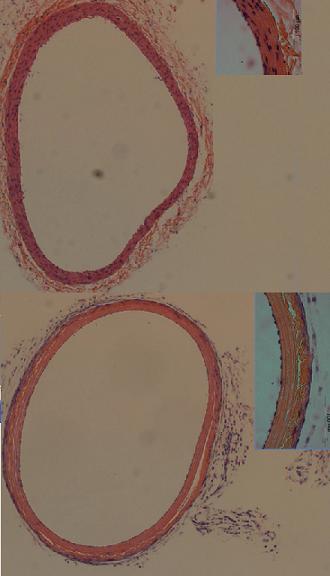A research team led by Prof. Boris Rubinsky from the Hebrew University has developed a method to prevent recurrent narrowing of arteries among heart patients who have undergone catheterization. An article about this method is published today in the prestigious journal PLoS ONE

A research team led by Prof. Boris Rubinsky, head of the Center for Bioengineering Research in the Service of Man and Society at the Benin School of Engineering and Computer Science at the Hebrew University, has developed an applied method to prevent recurrent artery blockage among heart patients who have undergone interventional catheterization.
Interventional catheterization is a common treatment for patients who have had a heart attack as a result of a disruption in the regular blood supply to parts of the heart due to coronary artery calcification.
During the treatment of the patient, the cardiologist expands the blocked artery by inserting a balloon and inflating it at the point of blockage. The treatment is often accompanied by implantation of a stent (stent, thin intra-arterial tube) inside the artery to prevent its narrowing and repeated blockage. This process is harmful to the walls of the arteries and creates a risk of repeated narrowing of the artery - a significant problem in the treatment of heart patients as well as in the treatment of patients with other diseases.
The method developed by a team led by Prof. Rubinsky is a very valuable tool for the treatment of heart patients, especially in light of the fact that heart disease is the most common cause of death in the Western world.
The method results in targeted destruction of cells by increasing irreversible electrical conductivity in the cell membrane (Irreversible Electroporation - IRE). In this method, cells are destroyed within seconds using very short pulses of electric fields. This method destroys the cell membrane but does not damage other tissues in the treated area. Compared to technologies for local destruction of cells and tissues - the IRE method is simple and does not require special training of the medical staff.
In the IRE method, an electric field is applied to the target cells that penetrates the cell membrane. This process leads to the destruction of the cell because the electric current causes permanent damage to the cell membrane and the result is an irreversible damage to the stability of the cell - pulsation (transition of substances from a higher concentration cascade to the lower) - that is, loss of fluid from the cell or penetration of fluids into it.
The method of using electricity to destroy the cell membrane has been known for years, but only recently was Prof. Rubinski's team able to adapt it so that it only damages specific molecules in the tissues. As a result, this method of tissue removal has recently begun to be seriously considered for various medical applications.
In an article published today in the prestigious journal PLoS ONE, Prof. Rubinski's team demonstrated that the IRE method works efficiently and quickly to destroy the cells responsible for the re-clogging of rat arteries. In an experiment conducted, two arteries were clamped between gold coated electrodes. Electric waves sent at a speed of one millionth of a second were able to destroy the harmful cells in less than 23 seconds without any damage to neighboring tissues.
Destruction of cells using the IRE method was successfully tried for the first time in the world on humans in Melbourne, Australia, to treat prostate, liver and lung tumors. In the near future, experimental treatments for heart patients using the IRE method are planned.
Prof. Yaacov (J) Lavie, director of the heart transplant unit at the Sheba Tel Hashomer Medical Center, collaborates with Boris Rubinsky in the development of the IRE method for its applications in heart surgery.
Prof. Rubinski has an honorary degree for bioengineering research from Arnold and Barbara Silverman and serves as a researcher at the School of Advanced Studies at the University of California, Berkeley.

One response
With all due respect, it is a bit exaggerated and misleading to call the journal Plos One "prestigious". This is a low default journal for those who have not been able to publish in other journals.